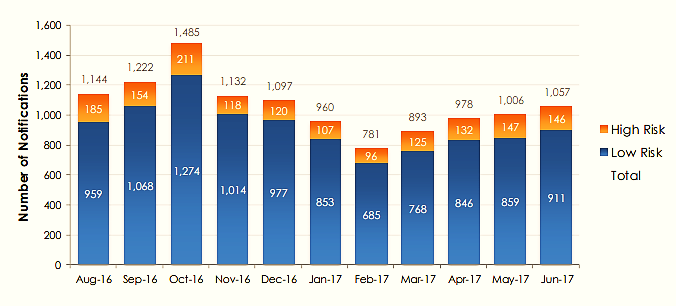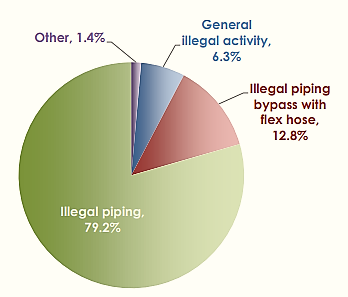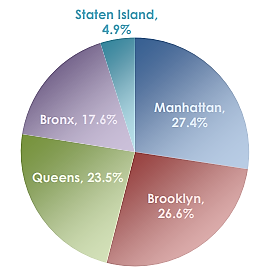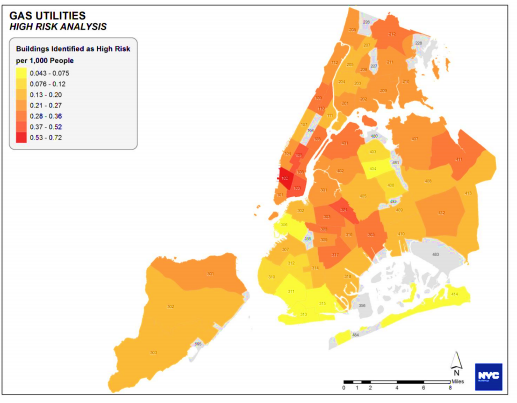
 Buildings311
Buildings311 Search all NYC.gov websites
Search all NYC.gov websites
Gas Utility Reporting
*Note: Gas Utility Risk Classification December 2017, Pursuant to Local Law 155 of 2016.*
Gas Utility Notifications to DOB
- Consolidated Edison (Con Ed) and National Grid provide natural gas service to residential and commercial customers throughout New York City
- Utilities perform gas service line inspections every three years in residential districts and annually in business districts
- Improper/degraded gas connections have the potential for life-threatening consequences.
- The Department inspects buildings for gas-related development and complaints
- Approximately 19,000 buildings were inspected from Aug 2016 – Jun 2017
- Collaboration between DOB and gas utilities is critical for implementing safety measures and quality control
DOB Reporting and Utility Notification Requirements
As required by LL 155 of 2016
- By December 1 2017, and every third year thereafter, such designated office or agency shall submit to the Mayor and the Speaker of the Council, and make publicly available online, a report on how the City has made use of [such] risk factors in targeting enforcement of laws and rules relating to the delivery by pipe or usage of gas in residential and commercial buildings and the efficacy of such targeted enforcement.
As required by LL 154 of 2016
- Within 24 hours after gas service to a building is shut off, and within 24 hours after gas service is not restored, such company or corporation [gas utility] and the owner of such building shall each provide notice to the Department in a form and manner prescribed by the Department.

Gas Utility Notifications to DOB
Periodic DOB – Utilities meetings are maintained to:
- Clarify policies and procedures
- Enhance procedural coordination
- Define notification and information requests, reports, and frequency
- Establish quality controls
DOB determines the classification of high risk in two ways:
- The gas-related condition is recognized as critical and requires immediate mitigation by the Utility and notification to DOB.
- Triage of inspection notifications using text analysis
- Utility notes which contain text associated with a high risk (i.e. illegal, bypass, defective, etc.) are prioritized for inspection.
Analysis of High-Risk Notifications
DOB received roughly 12,000 gas notifications from August 2016 to June 2017, and determined that approximately 10% should be considered high-risk to City residents.

High Risk Types
Visit notes containing the terms Illegal piping and illegal piping bypass with a flex hose represented 92% of the high-risk types.

High Risk Notifications by Borough
- Manhattan, Brooklyn, and Queens represented an equal proportion of high-risk notifications - around 25% for each borough
- Staten Island represented the smallest segment of high-risk notifications at 4.9%.

High Risk Notifications per 1,000 People by Community Board
- Highest density of high-risk notifications located in lower Manhattan

Inspection Dispositions for High-Risk Notifications
- Based on Utility Referrals and analysis of visit notes, DOB Inspected 1,562 Complaints for Buildings determined as high risk
- 24.8% of these inspections resulted in DOB Enforcement Actions including ECB Violations or Stop Work Orders
Post Visit Category Analysys (count)
- DOB Enforcement Actions: 387
- No Violation Warranted: 614
- No Access: 561
Grand Total: 1,562
Post Visit Category Analysis (percent)
- DOB Enforcement Actions: 24.8%
- No Violation Warranted: 39.3%
- No Access: 35.9%
*Note: Even though DOB did not gain inspection access on 36% of high-risk notifications, utility companies had taken actions to mitigate the risk.*
Gas Utility Reporting
- Gas Utility Reporting - December 2020
- Gas Utility Reporting - November 2020
- Gas Utility Reporting - December 2017


